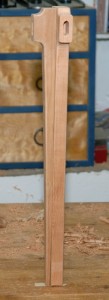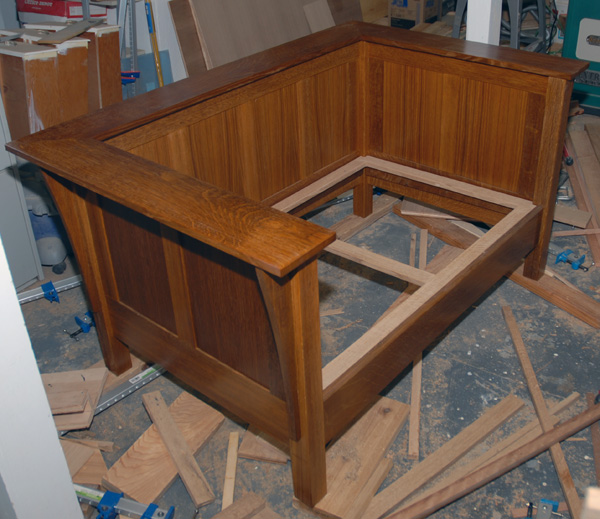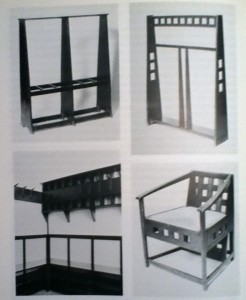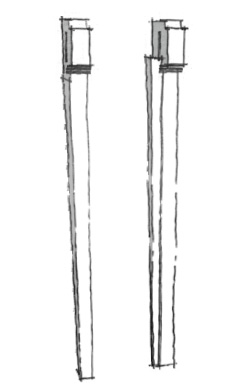After considering a couple of 3D models of the leg options, I built the basic leg since I could always modify it. After routing out the first of the legs for the table, I decided the simple 3/4″ thick option wouldn’t look as good as a variation on the laminated leg. A practical consideration underlines the visual appeal of the laminated leg as well–the extra depth provides a better seat for the apron tenons. Instead of a simple triangular piece glued to the main leg, I sawed down a copy of the main leg to produce a slimmer profile. This has the the benefit of producing depth for the stretcher tenon. The edge of the piece is rabbeted to produce a 1/4″ tongue that is house in a corresponding groove in the main leg.
Monthly Archives: May 2014
Stickley No. 220–Almost ready for upholstery
I was getting ready to glue the arm to the base when I realized I should probably double-check the width of the basement door before doing so. It was a good thing I did since the base will barely fit through without the arm. I’ll take things outside before attaching the arm, then it’s off to the upholsterer’s. As protracted as this build has seemed, selecting the fabric might be the hardest part . . .
Book Review: “Mackintosh Furniture”
I went outside early one morning a few weeks ago to put the outgoing mail in the box and found an anonymous copy of Roger Billcliffe’s Mackintosh Furniture there. The mystery resolved itself a couple of days later, but not before I had ample cause to thank my then anonymous donor. I’ve long admired Mackintosh’s furniture (and Kevin Rodel’s reinterpretations) for their use of negative and positive space and the way they synthesize Arts & Crafts, Art Noveau, and early Modern impulses, and Billcliffe does Mackintosh’s work justice, tracing its development in chronological order from the late 19th century through 1920.
Billcliffe considers Mackintosh’s furniture in the context of his architectural work, providing detailed verbal descriptions of Mackintosh’s buildings and renovations. And it is in these extended passages that I found my attention wandering, wishing for illustrated floorplans. Too, Billcliffe seems overly invested in defending Mackintosh’s reputation, but these factors can’t detract from the true appeal of the book, the lavish collection of black-and-white photographs documenting Mackintosh’s furniture design. Mackintosh’s most popular designs—including tall chairs and the Hill House hall table and chairs—are well represented, but the book also documents pieces I’d never seen before, from writing cabinets to beds and built-ins. I haven’t read widely in the field, so I can’t speak to how well Billcliffe’s work compares to other books on Mackintosh, but I know I enjoyed it and will return to again when I’m looking for inspiration.
More Information
Used copies of Mackintosh Furniture are available in hardback or paperback on Amazon.
A Tale of Two Legs
It turns out I didn’t have to look far to find an alternative to the turned legs in the Juhl coffee table I’m working on. There’s a tapered leg Juhl used in an ottoman design and in a coffee table design. While I’m contemplating a variation, though, I may as well contemplate a variation on that variation. I like the accent strip featured on the inside of the leg since it gives that profile a little more dimensionality. It also helps balance the structure.
The taper, though, calls to mind some Shaker designs, and I find myself considering eliminating the strip and beveling the leg from 3/4″ thickness at the top to 1/2″ at the bottom. The side stretcher looks a little less grounded, then, but the stark taper isn’t without its appeal, and it’s also easier to execute. Decisions, decisions.




